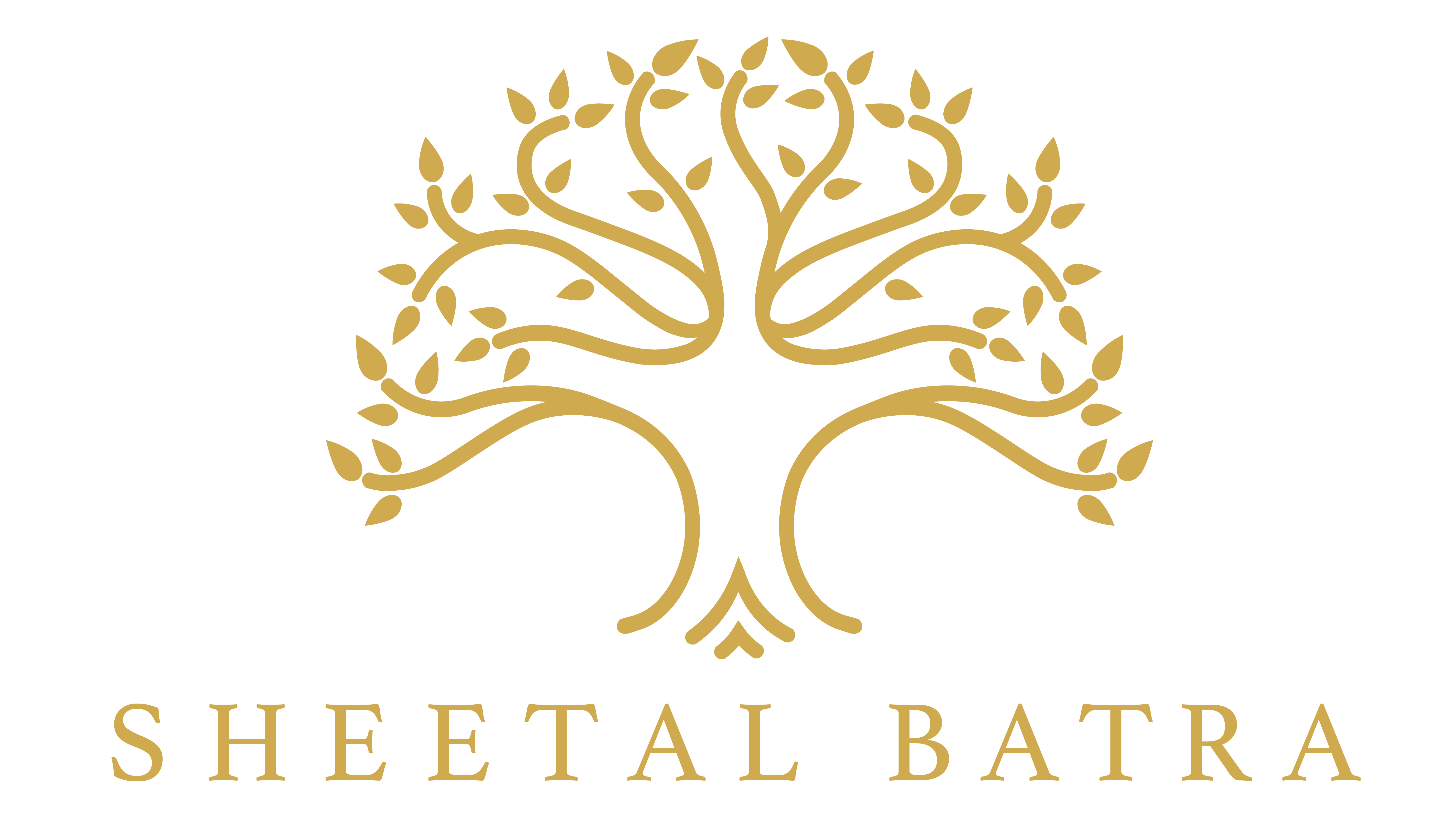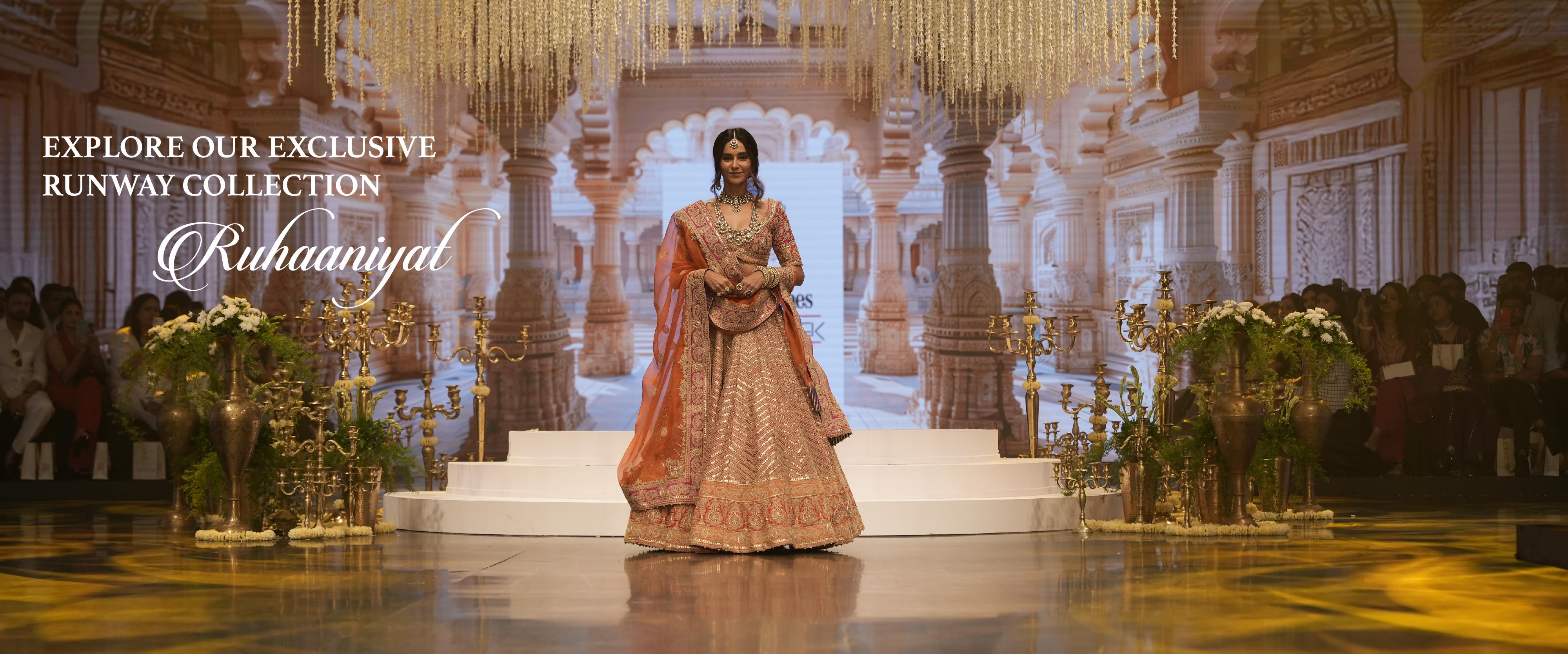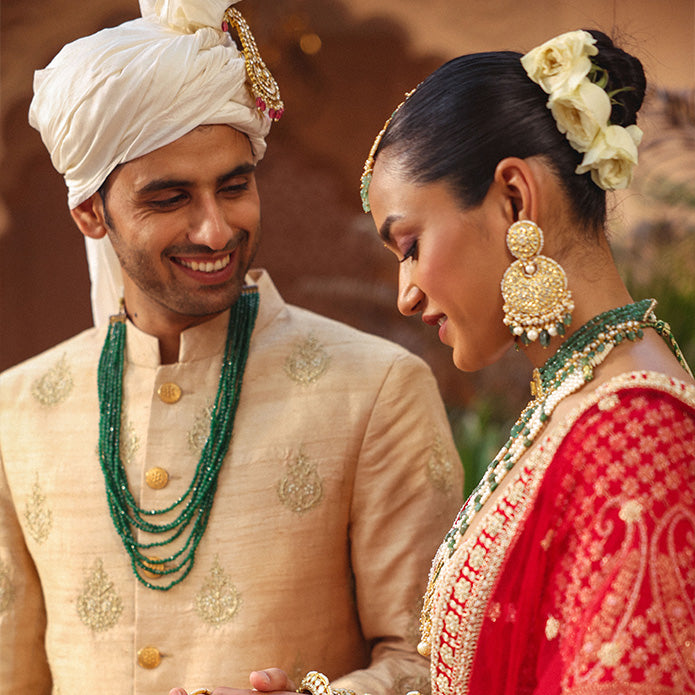Article: Traditional Embroidery in Ethnic Wear - The Tapestry of Indian Culture and Craftsmanship
Traditional Embroidery in Ethnic Wear - The Tapestry of Indian Culture and Craftsmanship
India is a land of mysteries and old history. Textiles, handlooms, and embroideries in India are as old as history itself. With a number of traditional embroideries coming from different regions of the land, each stitch comes with its own tale. With a host of unique types of embroidery that weave history, identity, and artistry, India has been called ‘The Land of Embroideries’ for ages.
From the snow-capped valleys of Kashmir to the vibrant deserts of Rajasthan, India’s diverse regions boast unique types of embroidery styles that have transcended generations. From regal wedding wear to festive wear, each region has its tale of unique hand embroideries. In this blog, let us travel through the different traditional embroideries that have left a legacy in contemporary fashion.
The Journey Through Indian Crafts - Different Types of Embroidery Names
Each region of India is known for its own embroideries and patterns. Hand embroidery is a labour-intensive process and can be done by skilled artisans. All good things come with effort. Traditional embroidery is still handmade and artisans have been passing down the skills through generations.
Let us look at some of them and learn different types of embroidery names and their process.
Kashmiri Tilla Embroidery - The Glittering Gold from the Himalayas
As the name suggests, Tilla embroidery is from the land of Kashmir in Northern India. This type of hand embroidery was originally reserved for the royals.
What is it About
Kashmiri Tilla embroidery is synonymous with opulence. Tilla embroidery dates back to the Mughal era. This traditional embroidery originally used fine gold or silver threads (tilla) to create intricate patterns on luxurious fabrics like silk, velvet, and wool.
Artisans often pair metallic threads with sozni (a type of needlework) to add floral motifs, paisleys, and vine designs.
Technique of Tilla Embroidery
The process involves stretching fabric on a wooden frame (adda). Using a specialized hook needle, artisans pull metallic threads through the fabric, creating raised, shimmering patterns.
Cultural Significance
Kashmiri Tilla embroidery is prominently featured on Kashmiri phirans (traditional cloaks) and bridal lehengas. Kashmiri brides often wear their bridal wear featuring this delicate traditional embroidery.
Modern Relevance
Today, Tilla embroidery adorns haute couture gowns and sarees, blending Mughal grandeur with modern minimalism. Designers like Sheetal Batra have revived this craft, pairing it with ethnic wear like kurta sets, anarkalis, and more for understated elegance.
Shop Now: Aabish - Emerald Green Kurta Dhoti Set
Gota Patti - Rajasthan’s Golden Appliqué
Gota Patti originated in Rajasthan, India. Rajasthan is a land of many textiles and art. Gota Patti is one such wonder that uses a complex process to create appliqué embroidery on fabric.
What is it About
Gota Patti, meaning "gold ribbon," is a dazzling appliqué technique from Rajasthan. Originally crafted for royal attire, this hand embroidery involves stitching gold or silver metallic ribbons (gota) and lace onto fabric to form geometric or floral patterns.
Technique of Gota Patti Embroidery
In this traditional embroidery, artisans cut gota into shapes (appliques) like leaves, squares, or triangles and sew them onto fabric using a small hook. The base fabric is often brightly colored, creating a striking contrast.
Cultural Significance
Gota Patti has been practiced in cities like Jaipur, Udaipur, Ajmer, and Bikaner in Rajasthan for centuries. They were originally worn by Rajput royalties and the Mughals.
Modern Relevance
Gota Patti is a staple in bridal and festive wear. Contemporary designers layer it with mirror work or thread embroidery for bohemian jackets, kurta sets, lehengas, and dupattas.
Shop Now: Nyasia- Pink Habutai Silk Gota Patti Embroidered Choga
Parsi Gara - A Sino-Indian Legacy of Elegance
The Parsi Zoroastrian community had settled in parts of Gujarat after their migration in the 8th century. Inspired by the Sino-Iranian trade, artisans often blended Chinese motifs on luxurious fabrics like silk to create Parsi Gara embroidery.
What is it About
Parsi Gara embroidery reflects the community’s historical trade with China. Intricate motifs - peonies, cranes, and pagodas - are hand-stitched onto silk using satin stitches and French knots.
Technique of Parsi Gara Embroidery
Artisans use silk threads in muted tones, embroidering entire saree borders over months. The Gara (saree) often features a central medallion (kor) symbolizing unity.
Cultural Significance
A hand-made Parsi Gara design saree can take up to 6 months. Known for its intricate hand embroidery types, Gara has been worn by Parsi brides for parties and weddings. The queen of the Netherlands was also spotted in a Parsi Gara at one of her public appearances.
Modern Relevance
Parsi Gara are traditional embroideries that are considered heirlooms and worn at weddings and Navjote ceremonies. Designers like Sheetal Batra modernize them with pastel palettes and add them to kurta sets and lehengas.
Shop Now: Sanvi - Off Rose Long Choga with Salwar
Bandhani - The Ancient Art of Tie-Dye
Originating in the land of Rajasthan and Gujarat in Western India, this tie-and-dye design is centuries old and has its roots in the Indus Valley Civilization. Handmade on cotton or silk fabric, this method used tying knots and dipping them in vegetable dyes to create resist patterns.
What is it About
Though not embroidery, Bandhani (from Bandhan, meaning "to tie") is a resist-dye technique integral to ethnic textiles. Fabric is tied into tiny knots before dyeing, creating patterns like shikargah (hunting scenes) or boond (dots).
Technique of Bandhani Tie and Dye
Artisans use fingernails or tools to pinch fabric, securing it with thread. Multiple dye baths create layered colors.
Cultural Significance
Bandhani has great cultural significance, especially in Rajasthan and Gujarat. Bandhani sarees and lehengas are often worn during festivals like Navratri and for Rajasthani weddings and religious ceremonies. The leheriya design symbolizes joy, prosperity, and auspiciousness.
Modern Relevance
Bandhani sarees and dupattas remain festival favorites. Designers experiment with indigo and ombre effects for contemporary appeal. At Sheetal Batra, you can find designer suits with bandhani prints on Upada silk - a perfect match for festive occasions.
Shop Now: Azra - Kurta with Salwar
Kirandori - The Lesser-Known Gem from Madhya Pradesh
The great state of Madhya Pradesh is home to many indigenous textiles and embroideries. Hailing from Madhya Pradesh’s Malwa region, Kirandori uses a running stitch to craft geometric or floral motifs with thick threads on cotton/silk. Bold hues like red, yellow, and green reflect tribal roots.
What is it About
Kirandori, a rare technique from the Malwa region, involves stitching small, straight stitches (Kiran means "ray") to form geometric or floral patterns. It resembles kantha but uses thicker threads.
Technique of Bandhani Tie and Dye
Skilled artisans use a running stitch to create radiating designs, often on cotton or silk. Colors are typically bold, with red, yellow, and green dominating.
Cultural Significance
Kirandori embroidery symbolizes communal unity and storytelling. Its geometric patterns and vibrant hues often narrate folklore, rituals, or nature’s rhythms.
Modern Relevance
Kirandori is gaining attention in sustainable fashion circles for its simplicity and tribal aesthetics.
Shop Now: Mahika - Hotpink Long Kurta With Palazzo And Dupatta
The Charm of Hand Embroidery to Add Elegance to Every Outfit
Hand embroidery transforms garments into wearable art, infusing them with timeless sophistication. Each type of embroidery is meticulously crafted with stitches adding depth, texture, and a bespoke touch that machines cannot replicate.
Traditional embroideries with delicate floral motifs, intricate patterns, or shimmering metallic threads catch the light and eye, exuding understated luxury. Unlike mass-produced designs, hand embroidery carries the artisan’s soul—subtle imperfections and variations that celebrate human craftsmanship. Whether adorning a bridal lehenga, saree, or kurta set, traditional embroidery elevates fabric into heirloom-worthy elegance, blending cultural heritage with modern aesthetics. Hand-embroidered details whisper refinement, turning ordinary outfits into statements of grace, patience, and individuality.
Conclusion
From the golden valleys of Kashmir to the arid plains of Rajasthan, traditional embroidery is a testament to India’s artistic diversity. These techniques passed down through generations, continue to inspire global fashion while anchoring wearers to their roots. Sheetal Batra brings you designer ethnic wear with traditional embroideries like Kashmiri Tilla, Gota Patti, Kirandori and more so that you look the best at any festive occasion or wedding. By embracing handcrafted outfits, you don’t just wear art - you keep history and heritage alive.



